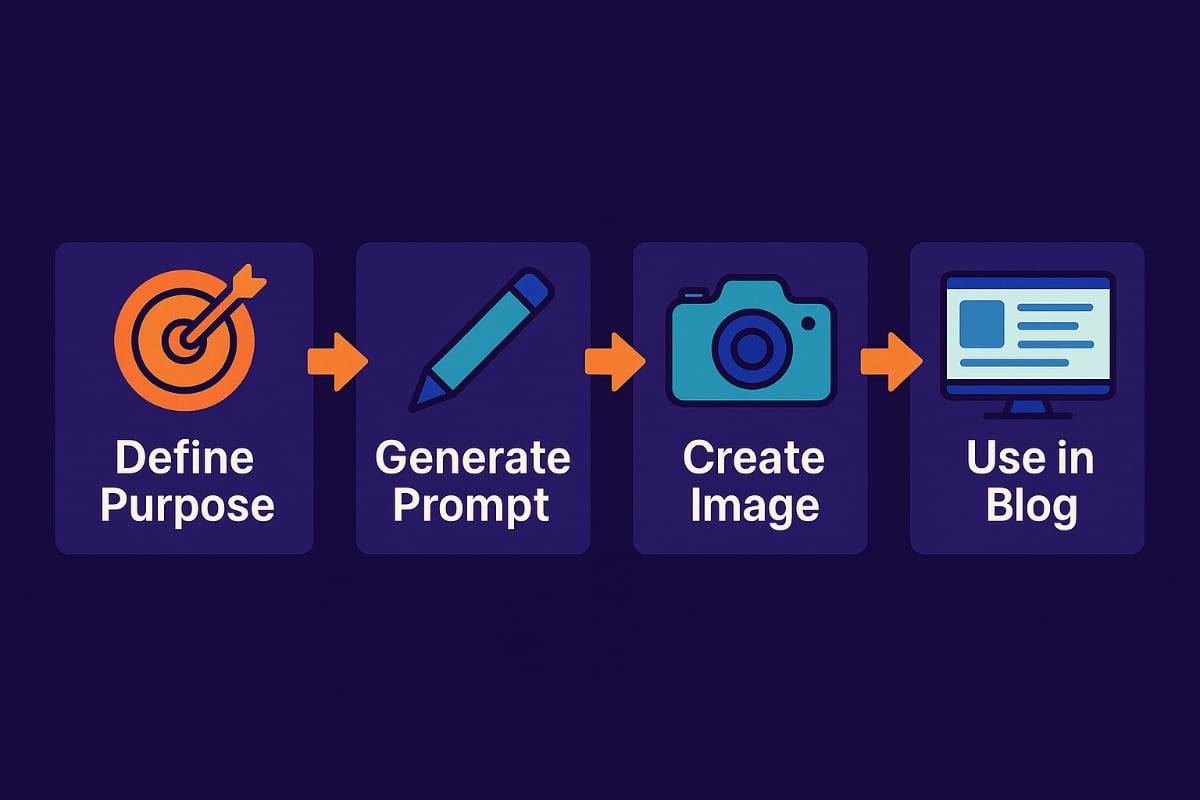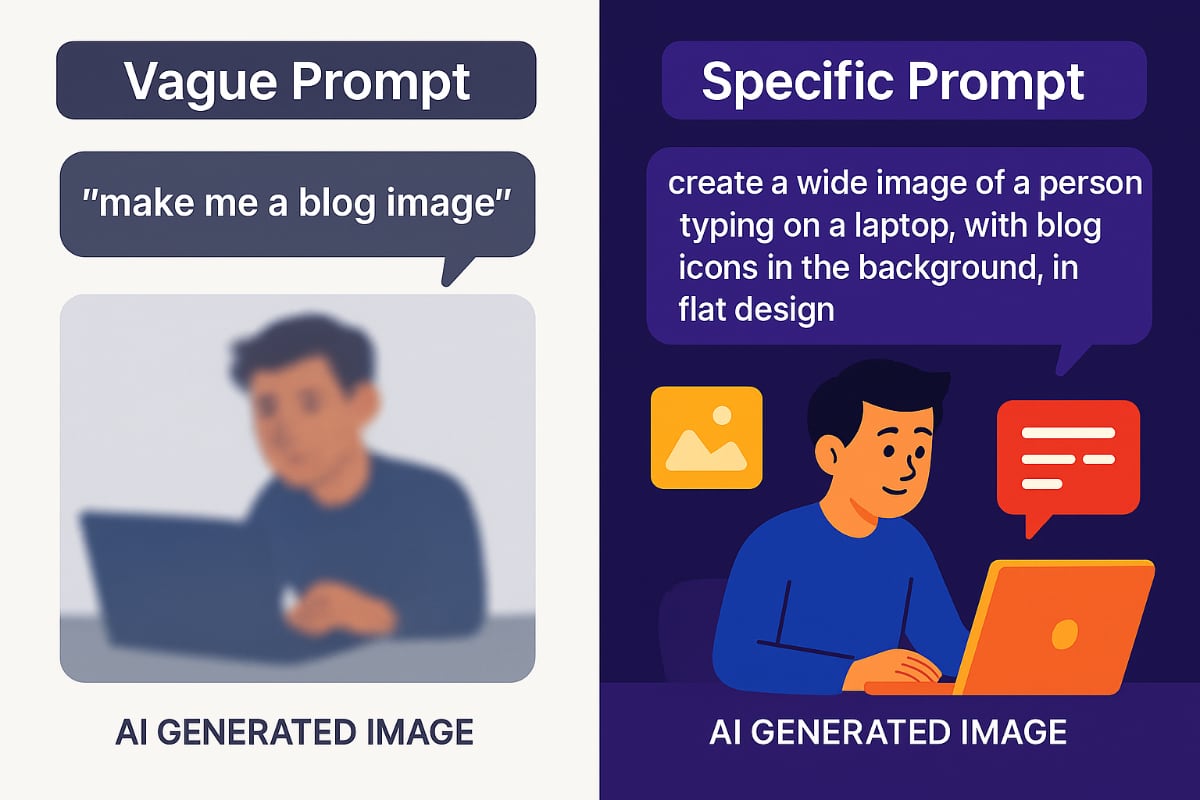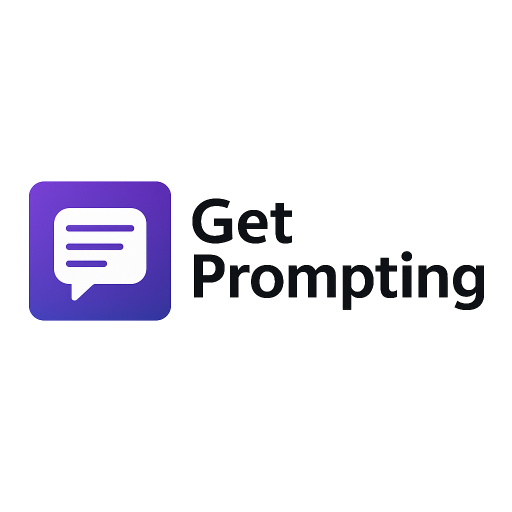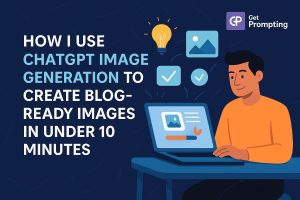How I Use ChatGPT Image Generation to Create Blog-Ready Images in Under 10 Minutes
Creating visuals for your blog shouldn’t feel like a creative roadblock. If you’ve ever stalled out trying to find the “perfect image,” you know how frustrating that can be — especially when you just want to hit publish. That’s where ChatGPT image generation comes in. It’s fast, flexible, and surprisingly fun — and once you’ve got a solid workflow, it can save you hours.
Why Use ChatGPT Image Generation
If you’ve ever sat down to finish a blog post, write a newsletter, or publish a product page and then hit a wall trying to find the right image to go with it—you’re not alone.
Stock photos? Boring or paywalled. Canva? Powerful but kind of a time-suck if you’re in flow.
That’s why I started using ChatGPT’s built-in image generation. Once I figured out a workflow that actually fit my creative process, I was able to go from blank canvas to on-brand visual in under 5 minutes—and I haven’t looked back.
This is the full workflow I now use to generate blog headers, social visuals, and email illustrations quickly using ChatGPT Plus. No third-party tools required.

🧠 Step 1: Define the Image Purpose
Before you ever prompt ChatGPT for an image, know what the image is for.
Ask yourself:
Real Example: When I published my post 5 Biggest Prompting Mistakes I Made, I didn’t want a generic robot image. I wanted something that felt human.
So I wrote:
“Create a digital illustration of a casual workspace. A person sits at a laptop looking confused, surrounded by scribbled notes and coffee. Soft lighting. Light comic-book shading.”
It nailed the vibe of the post—relatable, thoughtful, a little chaotic.
✍️ Step 2: Use ChatGPT to Write a Prompt for the Image
This is where the real time-saving happens.
Instead of writing every visual prompt manually, I let ChatGPT act like a visual strategist.
Prompt I use:
“Act as an AI image prompt engineer. Based on the topic ‘[insert topic],’ generate 3 detailed prompts I can use to create a visually appealing blog image. Include style, tone, and visual composition.”
Example Output for: “Prompt Engineering Tips”
Pick one. Or remix them for step 3.
Take a look at the example below comparing the output of a vague prompt to a specific one

🛠 Step 3: Use ChatGPT Image Generation to Create Your Image
Paste the visual prompt into ChatGPT and say:
“Generate this image. Make it friendly and web-ready.”
ChatGPT will generate the image inline (if you’re a Plus user). From there:
Pro Tip: When generating visuals for posts like Prompting Templates vs Prompt Engineering, I always ask ChatGPT for the image generation seed. This lets me iterate on the same concept, tweak the style or details, and refine the image until I land on the perfect fit — without starting from scratch each time.
💡 Step 4: How I Actually Use These Images
Here’s how this fits into my content workflow:
Bonus: Some image prompts spark ideas for new blog posts. Sometimes I will run an image first, then write a post based on the vibe it creates.
💼 ChatGPT Image Generation! 10 Mind Blowing Use Cases
If your not excited about ChatGPT Image Generation yet check out this video with 10 awesome use cases from Skill Leap AI!
✨ Final Thoughts: Use ChatGPT Image Generation as Leverage
You don’t need to be a designer. You just need:
AI takes care of the heavy lifting.
If you want the actual prompts I use for creating blog content and visuals, be sure to subscribe to the Get Prompting newsletter on the homepage.
It includes:
Stay sharp,
Michael
Creator of GetPrompting.com

